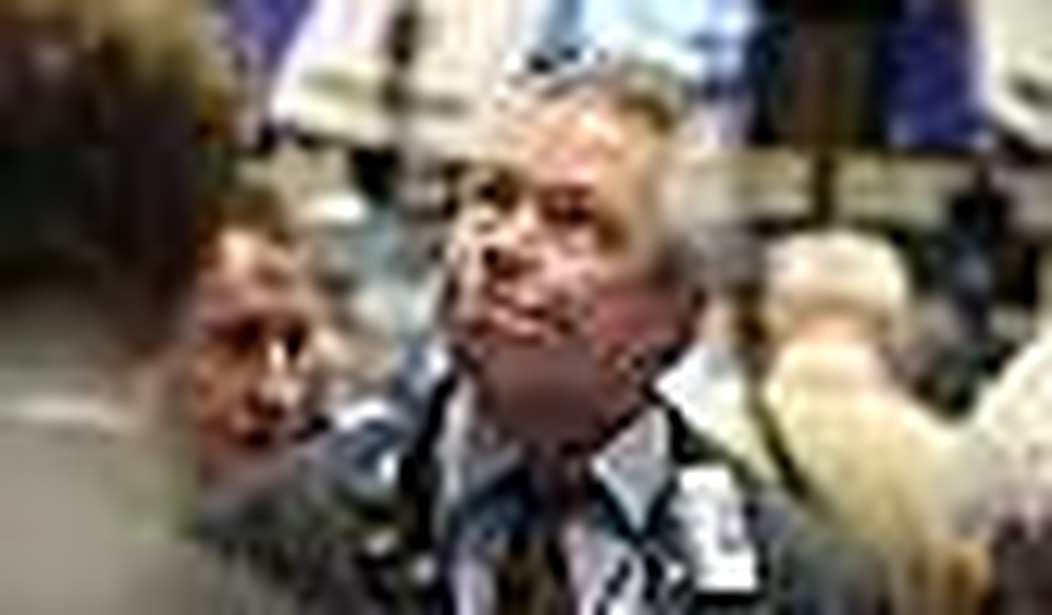CNBC correspondent Nick Santelli, in a rant heard round the world, encapsulated what many conservatives and apolitical observers have been thinking: the Obama economic policies are making things worse, not better. “The government is promoting bad behavior!” Santelli declared. By bailing out the irresponsible (e.g., home buyers, banks, auto companies) and continually tinkering with major sectors of the economy, the Obama administration, according to Santelli (and other observers), has embarked on a misguided course which ultimately threatens the fabric of our free-market system.
Conservative media and economists have been sounding the alarm for some time. But now even the network news shows are noticing that the Obama economic policies are going over like a lead balloon.
It is getting harder to ignore the facts. Fred Barnes writes:
Obama the market killer. The Dow opened at 8281.22 on the morning of Obama’s inauguration. Today it opens at 7465.95. That’s a vote of practically no confidence in Obama’s strategy for reviving the economy. The numbers were worse on the biggest days of the Obama presidency. The Dow fell 332.13 points on inauguration day, 381.99 points on the day Treasury Secretary Tim Geithner announced step two in the bank bailout, and 297.91 points when the president signed the stimulus bill three days ago. Financial markets are a bet on the future. The market’s view is that an Obamanomics-driven economy looks grim.
Today was more of the same as the price of gold hit the $1,000 mark and the stock market plunged close to 7300. It seems the Obama administration has picked up just where the Bush administration left off. The markets are once again exhibiting a lack of confidence in the U.S. economy and downright fear about the impact of the administration’s policies.
From a political standpoint, the idea that we should bail out irresponsible home buyers or incompetently run auto companies is proving to be very unpopular. Rasmussen polling revealed that 64% of Americans oppose further car company bailouts and only 38% back the president’s mortgage bailout plan.
The president then has a two-fold problem. First, the economy is worsening. By seizing the tiller with a series of rescue plans (crafted and approved almost exclusively by Democrats) and promising he will “save” millions of jobs (the precise figure keeps shifting) he and his Democratic allies in Congress now “own” the economy and will be held responsible for the progress of the recovery. Second, the very policies which they intend to implement are proving to be unpopular both on Wall Street and on Main Street.
You can see the panic beginning to rise in his media fan club. Paul Krugman eyes the latest Fed report predicting high unemployment through 2011 and whines, “Who’ll stop the pain?” Michael Kinsley is fretting that we are in for a bout of inflation.
It is not surprising that Obama has spent much of his time at campaign-style rallies (in Arizona and Denver last week) and far from the White House, most dramatically in a trip to Canada (where he put to bed the notion that he was going to act on his protectionist rhetoric from the campaign). The president certainly doesn’t want to appear trapped or under siege. And he plainly likes the campaign adulation and pomp of presidential visits.
Still, there is no getting around it: Obama has chosen to adopt a hyper-interventionist, anti-investor approach to the economy. He chose to ignore Republican pleas for tax rate cuts in the stimulus bill. He is threatening a Swedish-style bank nationalization plan. He wants bankruptcy judges to be able to rewrite mortgage agreements. All of this creates new economic turbulence and risks a populist political backlash. But this should come as no surprise.
At some level Obama understood during the campaign Americans’ aversion to liberal economic policies. Until Joe the Plumber caught him in an unguarded moment, he had done his best to appear the model of moderation on economic matters. He was going to go line-by-line through the budget and give 95% of Americans tax relief. He took issue with then rival Hillary Clinton’s idea for a health care mandate and he objected to her idea for a suspension of mortgage foreclosures. He did his best to give the appearance that he might govern less in the mold of 1970s liberal Democrats and more in the style of Bill Clinton. At least before the election he knew better than to jettison basic tenets of free market capitalism.
Now Obama is only a month into his presidency. It may be that he adjusts course, puts the brakes on the bailouts, and provides some relief for beleaguered investors and businesses. He would of course need to backtrack on some nasty rhetoric about the Republicans pushing “failed theories.” And he would have to finally cross the Democrats in Congress. But the alternative is a risky one, a high stakes gamble.
If he pursues this course of action — a government-centric recovery plan that in fact does little to spur private sector recovery — he puts his presidency and his vision of a new Democratic “permanent” majority at risk. The public did not vote for a European-style social welfare state. They did not vote for an acceleration of the failed economic policies of the last year of the Bush administration. And they certainly did not expect a trillion dollar spending bill with only double digit unemployment and inflation to show for it.
There is time for a course correction, but the window of opportunity is closing. Both the markets and the public have limited patience. If he was listening, the president this week would have heard the message: turn back while there is still time.









Join the conversation as a VIP Member